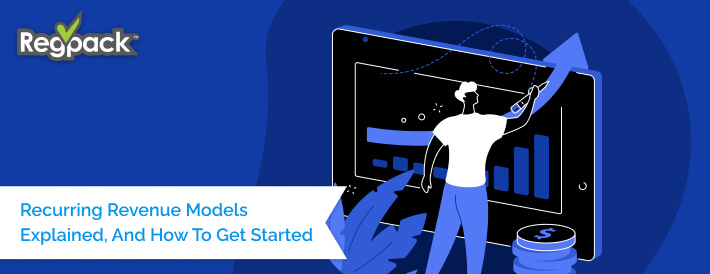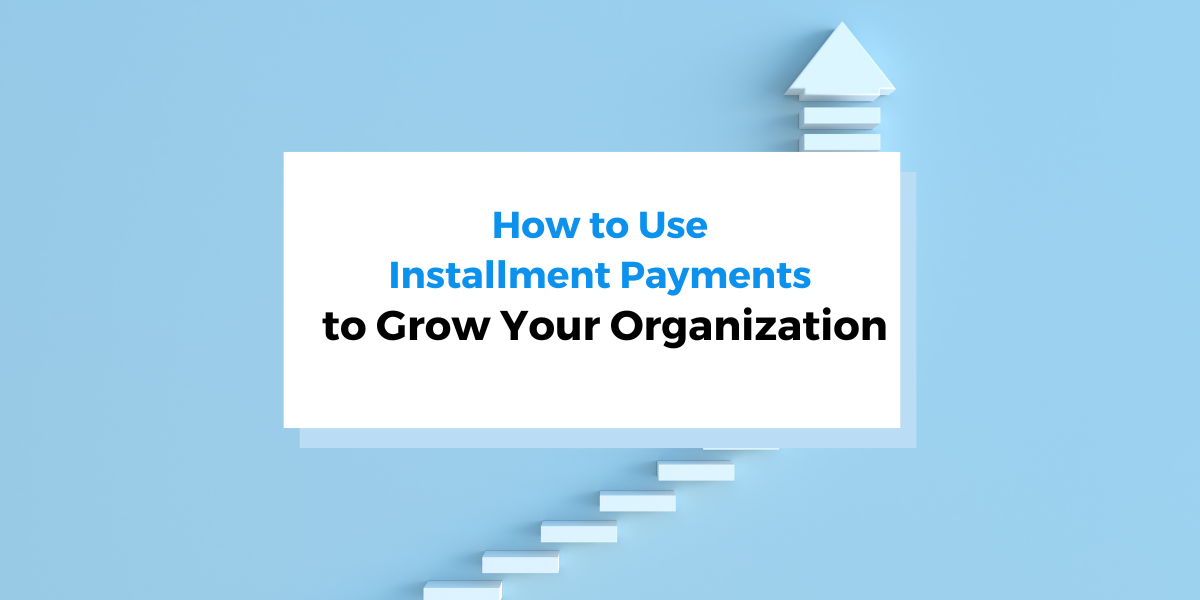The meteoric rise of subscription-based streaming services like Spotify, Netflix, and Hulu are turning businesses across multiple sectors to recurring revenue models to generate profits.
To inventors, the predictable nature of recurring revenue models allows them to predict how much revenue they will generate in the next 12 months compared to one-time purchases. They can then use that information to plan and invest properly.
To customers, subscription models allow them to only pay for a product or service as they use it. This system offers a more convenient way of consuming entertainment media and purchasing goods. According to Deloitte, , thereby replacing traditional TV subscriptions.
Another survey by the car rental business, Enterprise, shows that 46% of consumers have said that they would prefer buying an automobile subscription service to purchasing a vehicle. In an attempt to listen to what their customers have to say, Enterprise has decided to make the move to a monthly subscription model in April.
Recurring revenue models are commonly used by IT and eCommerce companies, but new technological advancements now allow other sectors to make the switch as well.
If you want to acquaint yourself with the basics of subscription models to see if it’s right for you, read on.
In this post, we will be covering recurring income definition, benefits, types, tips for getting started, what software solutions to use.
Let’s dive in!
- Recurring Revenue FAQ
- Types of Recurring Revenue Models
- How to Set Up a Recurring Revenue Model
- Recurring Revenue Model Software
Get your free recurring billing software demo today!
Recurring Revenue Model FAQs

What is a recurring revenue model?
A recurring revenue model is a business model in which customers purchase products or services from vendors on a monthly, quarterly, or yearly basis. Customers sign up for a subscription plan and then choose how and when they want to pay.
Since customers buy the product or service monthly, the service providers are guaranteed with a predictable stream of income and sustainable profit margin. For example, a 10-million dollar company with 70% recurring income can expect to generate $7M at the beginning of each year.
In contrast to one-time transactions, the company has to begin the year at 0. While the company can still make some predictions based on previous performance, it does not have a consistent revenue stream from customers who are paying month after month to base their financial plans around.
What industries use recurring revenue models?
Any industry with a “business-as-service” model like software companies, television, music, banking services, healthcare, and telecoms use a recurring revenue model.
Outside of these sectors, distance learning schools, professional associations, and event organizers with membership plans can also use this business model. That way, administrators can make it easy for their members to join an online program that they can access whenever they want to in exchange for a recurring fee.
Regpack’s membership CRM software helps you to reach out to your members in convenient ways, provide easy renewals, and handle recurring payments all in a single platform. To learn more, read our comprehensive guide: Membership Software: The Basics and 6 Solutions to Explore
What are the advantages of subscription based revenue?
We’ve mentioned earlier that the predictable nature of a recurring revenue model and people’s preference for pay-as-you-use-it payment method are the two factors that make it more advantageous (and popular) than one-time transactions. But that’s not the only reason why more and more business-savvy organizations use subscription revenue models.
- Scalable. Since you can automatically bill your customers at regular intervals, you won’t spend a lot of time doing tedious administrative tasks like filling out spreadsheets and manual invoicing for each client. Not only will this free up time, but also reduce your operational costs.
- Build long-term customer relationships. In a recurring income model, your relationship with your customer doesn’t end after the sale, but it continues on month after month. You can take this advantage as an opportunity to establish productive customer relationships and convince consumers to stay by upselling, starting a loyalty program, offering special discounts or coupons, and sending engaging newsletters. And as you know, increased customer retention rates often lead to increased sales.
- Easy way to provide a proof of concept. It’s challenging to offer a trial period with one-time transaction models. Even if it’s possible, paying the product at its full price after the trial ends is often the reason why some customers don’t continue to sign up. With a subscription revenue model, however, you can offer a free trial of your product or service to entice customers to sign up, and if they do decide to keep the relationship going, there’s no hefty up-front fee to deter them.
7 Main Types of Recurring Revenue Models

There are different types of recurring revenue models that you can leverage. Here are the most common:
Tier Based
Tiered billing is a SaaS pricing structure that is built in multiple levels or tiers of use chosen by a customer. The cost of each tier increases depending on several factors, such as usage limits and features offered in any package or plan. In a nutshell, a tier-based recurring revenue model involves putting together your services or products into separate packages.
Customers can then choose which package they want and get billed automatically on a monthly, quarterly, or annual basis. They may also receive a friendly-discount for selecting a longer-term plan. And once they hit the limit on tier 1, they may opt to upgrade their plan to the next tier, offering them more usage limits and functionality. A popular example is Formstack with its Bronze, Silver, Gold, and Platinum tiers.
In sum, tier-based pricing allows you to attract a wide range of users with specific needs. For example, If you have a membership program, you can bundle your products into tiered plans and let members choose a package that suits their needs to offer something for everyone.
Basic for entry-level members, Advanced for intermediate, and Expert for senior-level members. For example, Basic plan may include access to weekly newsletters, three professional development resources per week, priority registration for seminars and training, and so on. Then, provide members with an automated billing option using an online payment processing software to ensure interrupted access to your services.
User-based
Another SaaS pricing model, user-based billing is charging your customer per number of users or seats they add to their plan. For example, a customer may add another user for $10 monthly to their plan. Simply put, the more they pay the more users or seats they add.
SaaS companies that sell CRM apps or project management platforms like Airtable Pro utilize this type of pricing model to generate recurring income. They limit the number of users you can add in the basic plan to 10 users, for example. If you wish to add more users, you’ll have to upgrade to the next tier.
Hybrid
As the name suggests, hybrid recurring revenue models combine two or more models to generate sales. For example, combining one-time sales with recurring billing options or fixed pricing with usage-based models. Often, this pricing structure is offered to make selecting from a wide variety of options less overwhelming (and paralyzing) for customers and help companies diversify their income streams.
A good example is Amazon Prime, which combines recurring membership billing with one-time payments. Users pay a recurring fee to stream movies and TV shows, while also being provided with the option to rent or purchase movie titles for a one-time fee.
Usage-based
SaaS businesses that have usage-based pricing charge customers on a per-use basis. For example, you might charge a customer based on how much they use or consume your product or service.
This pricing structure typically applies to telecommunication companies that offer pay-as-you-go plans. Customers are charged depending on how much internet data, calls or text they used up at the end of their billing cycle. Another is Zapier, whose usage-based pricing structure is similar to a tier-based model. Users can select a plan from a wide variety of tiered options based on the number of tasks and Zaps they need.
Freemium
“Free” and “premium”, this recurring revenue model offers customers a lifetime plan for free with an option to upgrade to a premium or paid plan. It is a pricing strategy to convert free users into paying customers. Skype, MailChimp, Spotify, Evernote, OneDrive, Dropbox, and Wistia are examples of businesses that have freemium models.
With a freemium plan, you can offer both free/complimentary and paid tiers. Although the free option comes with fewer features than its paid counterpart, freemium allows the users to switch between two options anytime they need.
If you’re planning to use this pricing structure for your business, it’s crucial that you use a flexible payment processor that allows you to set up payment plans on your website and gives you control over how and when payments are made. Whether you want to set a specific fixed price per service, offer recurring payments plans to customers, or deferred payments, a flexible payment processing software like Regpack gives you all the tools and help you need to customize any plan for your services or products.
Lastly, providing your users with a seamless experience will increase sales and customer satisfaction.
Hard Contracts
Hard contracts involve providing customers with a service over a day, week, or month for pre-set prices. This way, businesses can secure future income against unexpected delays and cancellations.
For example, a customer pays $10 for a 3-day unlimited call and text plan. A customer only pays a fixed amount for the calls and texts they are going to use for three days.
In this model, a service is provided to customers over a specific period for pre-determined charges. It secures future revenue for the business against unexpected cancellations and delays.
The fine print of hard contracts is tying a customer to a plan until the contract period is over. So if they want to terminate the contract early, they will need to pay a cancellation fee (e.g., 5% of the total contract price). Once the contract ends, customers can keep using the product or service at the same rates with a monthly contract. Therefore, the company will continue to generate recurring revenues, although the contract has ended.
Auto-Renewal Subscriptions
Auto-renewal subscription is a pricing strategy that involves automatically collecting payments from customers who want to use a product or service for as long as they’d like. Cancellation is free and purely up to the customer. Great examples are streaming services like Spotify, Apple Music, and Netflix, annual anti-virus software, monthly cable TV, and data storage providers.
Since customers know how much they will be paying on a recurring basis, and planning to use the product long term, they usually agree to get billed automatically to save time and effort. So if an auto-renewal subscription model is right for your business, be sure to use a payment processor with recurring billing features like Regpack.
With it, you’ll be able to collect and store payment details online, charge customers on custom recurring payment schedules, and create and handle auto-billing plans efficiently to avoid delays and cancellations.
How to Set Up a Recurring Revenue Model

Now that you know how businesses can benefit from a recurring revenue model and which type to use, let’s walk you through the steps needed to implement it.
Create a Subscription Service
Implement a subscription service into your business.
To start generating recurring revenue, you need to implement a subscription service into your business. For ideas, there are four types of products that you can sell through a monthly or annual subscription plan.
- Content (e.g., video game streams, online magazines, news subscriptions, masterclass programs, virtual summits, and podcast shows)
- Software (e.g., apps and other SaaS products)
- Product-based (e.g., subscription boxes of particular products like grocery items, fresh produce, and pet food)
- Service-based (e.g., productized services with recurring revenue like monthly web maintenance services, online job marketplaces with freemium offers, stock photography websites with hybrid pricing models.)
Create your recurring revenue model.
Determine how much you’ll charge for your subscription services. For correct pricing, consider the following costs:
- Raw materials needed to create your product or service
- Shipping materials
- Marketing and advertising expenses
- Operational costs like payroll, office rent, equipment, and the like
- Additional fees on top of the subscription plan or package price
A good rule of thumb is to ensure you have at least a 45% profit margin to keep your business operational. Once you’ve set up your pricing, decide which type of recurring revenue model is best for you and how you’d like to get paid – weekly, monthly, quarterly, or annually.
Set your business terms and conditions.
Customers only agree to get billed automatically for a subscription-based product or service if they understand how auto-renewal works. Earn their trust (and loyalty) by stating clearly how your subscription model works and what customers must do to terminate it early. Additionally, check with your federal and state authorities regarding consumer protection laws that govern cancellations and auto-renewals.
Prepare your inventory.
If you offer product-based subscriptions like groceries, clothes, pet food and the like, you’ll need to make sure you have enough stock of those items in your inventory. Also, think about ways to deliver the orders to your customers fast and in good condition.
Invest in marketing and advertising.
So you have a new subscription-based product, now what? Start building awareness around your brand and how it will improve your customer’s life. Spread the word on social media, news sites, email, among other content distribution channels.
Additionally, keep your customers engaged with your brand offering VIP membership programs, special discounts, promos, new product releases, upgrade features, and so on. Besides, changing things up once in a while is good for any business because anything new and innovative is always appealing to customers. And if you can find a way to provide a more personalized experience for them, the better.
Based on a new study, 28% of consumers stated that having a personalized experience is the top reason they continue to subscribe to a service. For example, food subscription box providers can invest in personalizing their boxes with custom packaging designs or adding personalized inserts.
Find Software Solutions
Once you’ve set everything up, it’s time to find a software solutions provider to implement your subscription revenue model. Below are the top features that you should look for in any billing management software for your business.
- Flexible pricing structure. One of the main reasons why recurring revenue models continue to thrive even amidst the coronavirus pandemic is because it allows customers to pay only for the product they use over a certain period of time, helping them avoid overspending. If they no longer want it, they can cancel their subscription for little or no fee. Similarly, you’ll want the same thing for you so you can easily scale your business as you grow. Find a recurring billing software that has flexible price plans and all the tools you’ll need to set up and handle pricing changes across your offerings seamlessly.
- Branding tools. Improve brand visibility and recall by adding corporate branding elements to your invoices and other marketing collaterals. Branding makes your business look credible, professional, and smart. So use a billing platform that allows you to customize your invoices, emails, and payment processing web pages.
- Tracks earned and unearned revenue. Subscription businesses typically earn deferred revenue, which is money that is earned over time, from sign up to every end of the billing cycle (monthly or annually) when the product or service has been used. So every week, month or year, a portion of deferred revenue turns into earned revenue, and this needs to be tracked and recognized correctly to generate accurate financial statements. A payment processing software that has monitoring and reporting tools can help you to recognize revenue efficiently so you don’t confuse one-time fees with recurring subscription fees. To learn more, read our post about SaaS Revenue Recognition.
- Coupons, discounts, and promo deals. Use a program that allows you to launch discount and promo deals from the system itself so you won’t have to go anywhere else. Some advanced programs like Regpack lets you set up discount codes or coupons on your products, so that when a customer uses a discount code, the discounted rate is automatically applied to their cart. Learn more here.
- Payment Card Industry (PCI) compliant. To protect your financial information from cybertheft and data hacks, the PCI has laid out some rules and standards for you to follow. It is a must for online businesses that handle credit card payments to be PCI compliant to ensure every data processed and stored during the billing is protected at all times. Plus, violation of PCI rules and standards may lead to hefty fines.
- Accepts different payment methods. Giving your customers multiple payment options makes it easier for them to complete transactions instead of getting repelled by having very limited options. Consider the following:
- Credit/debit card
- Cash on delivery
- Cheque
- Online bank transfer
- E-wallets
- Over-the-counter via banks, payment/remittance centers, and other recognized payment processing facilities
- PayPal
Subscription Revenue Software: Regpack

Set up your company’s recurring revenue model with Regpack!
In Regpack, you can:
- Create a well-organized membership registration system. Shopping cart abandonment is real! Based on a study by the Baymard Institute, the average shopping cart abandonment rate of online store businesses is 69.8%. Factors like expensive shipping fees, slow handling times, limited payment options, and more importantly, a complicated checkout process are what’s stopping customers from completing their transactions. With Regpack, you can customize registration forms and flows to provide your members with a personalized online registration experience both on mobile and desktop. It lets you control what information you want to receive so you can make the process simple and quick for your members.
- Integrate a PCI-compliant payment processing tool with your website. Regpack is PCI Level 2 compliant so you’re rest assured your data is protected at all times. To start collecting payments on your website, simply create a payment form via Regpack and install the code on your website.
- Set up payment plans and automate billing. Create a subscription revenue model by bundling your products into separate packages and creating payment plans for each to offer something for every type of customer you have. This system allows you to implement how and when payments should be made (e.g., one-time or installment) to ensure customers pay you on time. It also eliminates the need to constantly remind them, saving you time and effort. And since recurring revenue models are predictable by nature, you can manage your cash flow easily and make informed business plans for the future.
- Streamline your reporting process. Regpack’s dynamic data and payment reporting feature gives you a 360-degree view of your cash flow, revenue, trends, and valuable insights into customer buying behaviors. This way, there’s less time spent on juggling multiple spreadsheets. View everything at a glance and use the filtering tools to find the exact data you’re looking for.
- Accept donations and membership renewal fees. If you have a content-based subscription business, such as Patreon, virtual summits, Easy Allies, or affiliate websites, you’ll benefit a lot from using Regpack’s membership and donation payment software. You can automate and manage membership payments on your website in a few minutes. This system features a robust way to manage registrations, collect membership dues and donations online, set up automatic dues renewals, and customize payment emails.
- Offer different payment methods. Collect weekly, monthly, or yearly payments online via credit/debit card, cash, check, eCheck/ACH, and pay apps like Google and Apple Pay.
Building a Recurring Revenue Model for Your Business

Recurring revenue models have quickly become an ideal choice for business owners, investors, and consumers. The recurring revenue generated from each type is easily predicted, making cash flow management, revenue forecasting, and investment plans more manageable.
Customers also find subscription revenue models more convenient and flexible than one-off sales. With an option to subscribe to a full package but only pay a small portion of the total cost every month, they are able to manage their expenses well, use the product or service whenever they want, and not get upset about paying hefty cancellation fees should they decide to stop the subscription for a while. Thus, recurring revenue models can help you build customer trust and loyalty, improve customer retention, and increase sales through up and cross-selling.



















